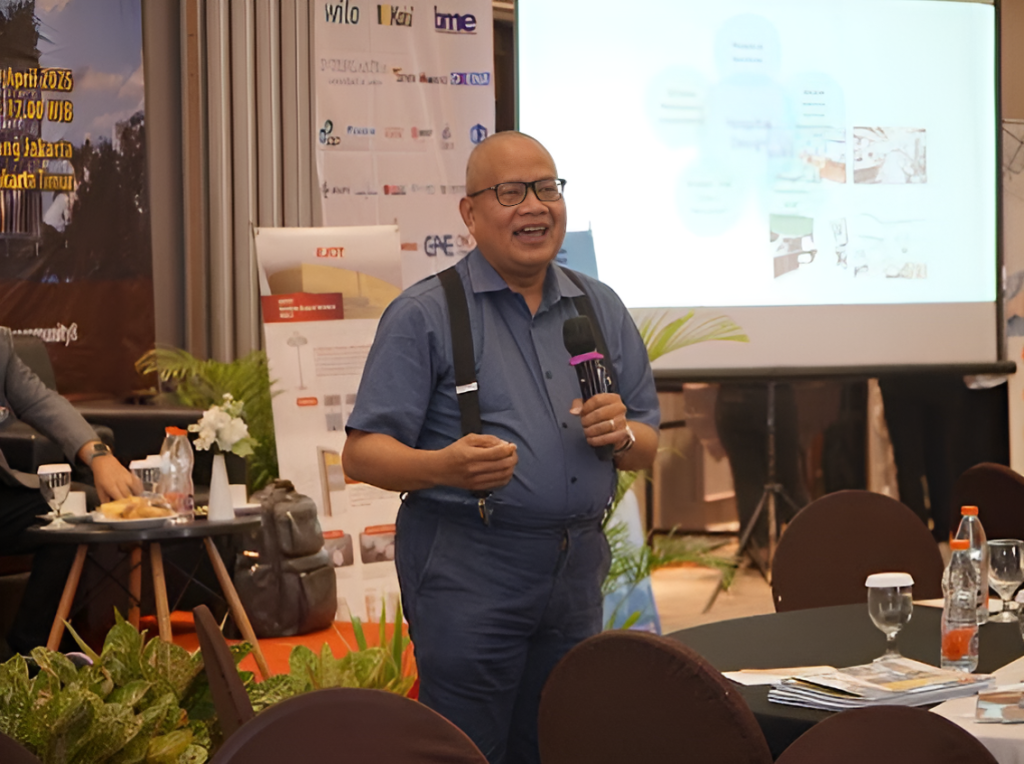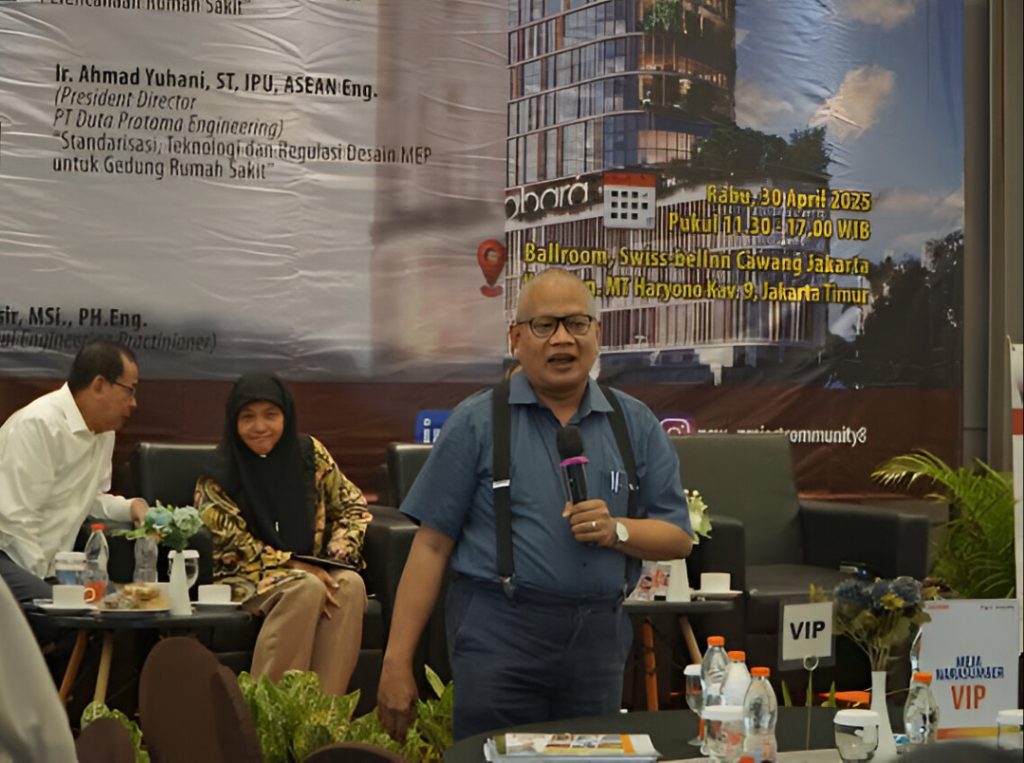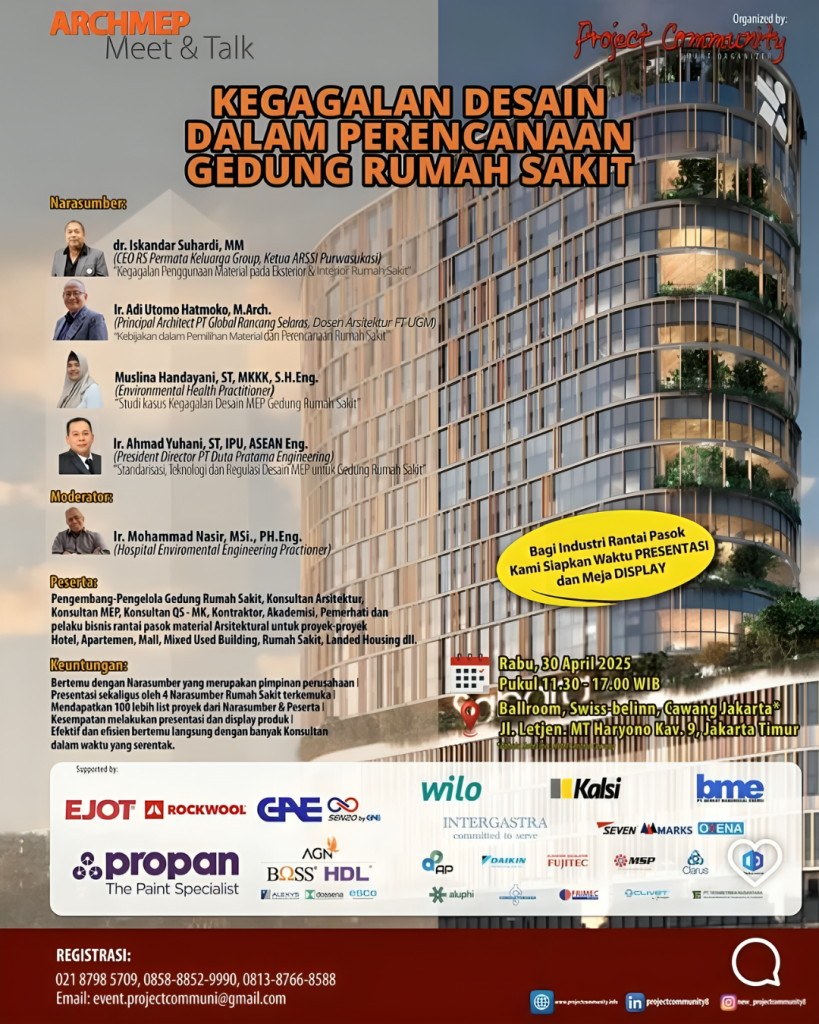Ir. Adi Utomo Hatmoko, M.Arch., a lecturer at the Department of Architecture at Universitas Gadjah Mada (UGM) and an architect with decades of professional experience, was one of the featured speakers at the ARCHMEP Meet & Talk held on Wednesday, April 30, 2025, from 11:30 AM to 5:00 PM at the Swiss-Belinn Ballroom, Cawang, East Jakarta. The event brought together professionals from architecture, healthcare, and engineering under the main theme, “Design Failures in Hospital Planning.” Pak Adi, as he is affectionately called, reaffirmed his commitment to sharing knowledge and practical insights, especially on designing better, more functional, and sustainability-oriented healthcare facilities.
During his session, Pak Adi shared his thoughts on material selection policies and hospital design. He began by explaining the basics of healthcare facility planning, emphasizing that a hospital is not just a functional building, but a critical space that directly affects human health and safety. Because of this, choosing the right materials is extremely important. Even small mistakes in material choices can have major consequences for both patients and medical staff.
He explained that materials used in healthcare facilities must be selected with careful consideration for technical performance, user health and safety, and sustainability. For example, in Emergency Departments (EDs), the recommended flooring is seamless vinyl sheet of the heavy-duty type, designed specifically for hospitals. This material is hygienic, resistant to chemicals, easy to clean, and has minimal joints, reducing the buildup of dirt or germs. For walls, using stopsol or sunergy glass helps maintain thermal comfort while still allowing natural light in—an approach that supports energy efficiency.
Pak Adi also gave practical examples, explaining the importance of matching wall materials to their function. Exterior walls should use red bricks, which are more resistant to weather, while interior walls can use lightweight bricks for better efficiency. Roof areas must be coated with waterproofing to prevent leaks that could disrupt hospital operations. For air conditioning systems, he recommended using VRF (Variable Refrigerant Flow) units, which are more efficient and environmentally friendly than conventional split AC units.
All of these approaches align with the Sustainable Development Goals, particularly SDG 3: Good Health and Well-being, SDG 9: Industry, Innovation and Infrastructure, and SDG 11: Sustainable Cities and Communities. Choosing the right materials helps protect building users, improve building durability, conserve energy, and reduce environmental impact. Pak Adi’s insights highlight the architect’s critical role in designing not only functional and aesthetic spaces, but also spaces that contribute to long-term sustainability.
Reported by Rindi Dwi Cahyati



